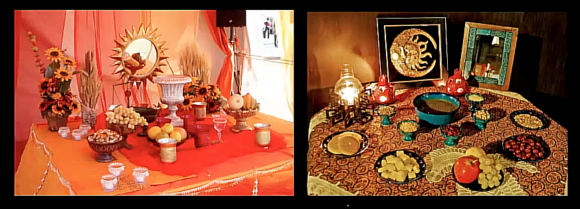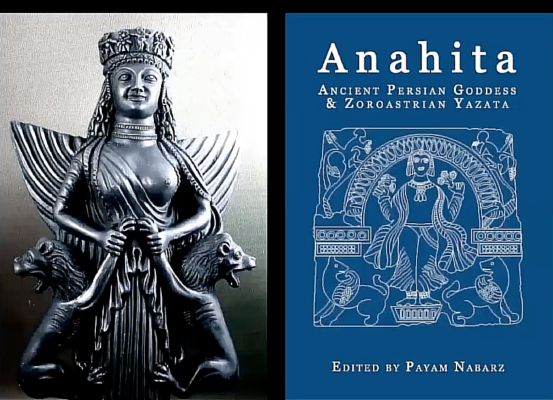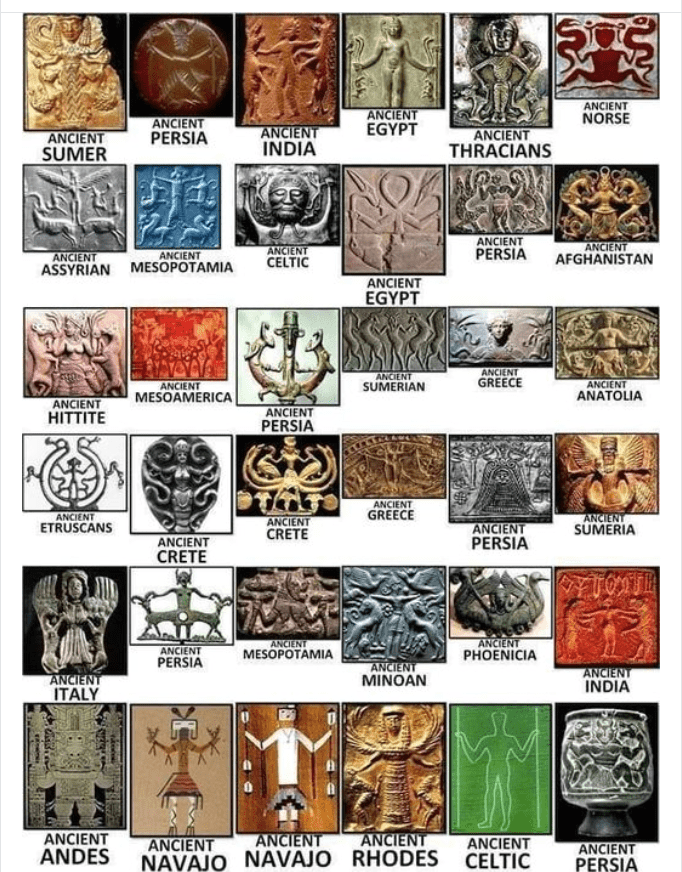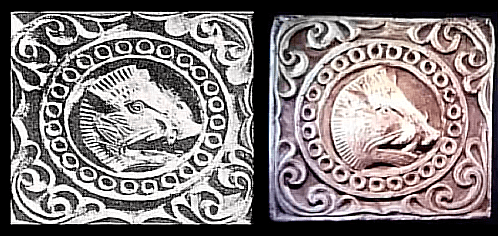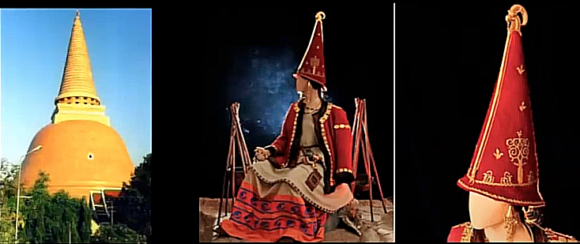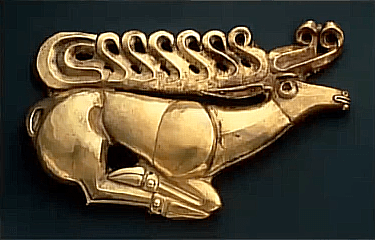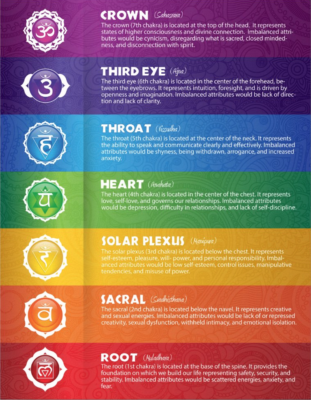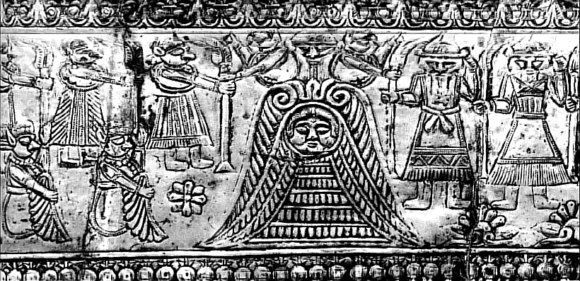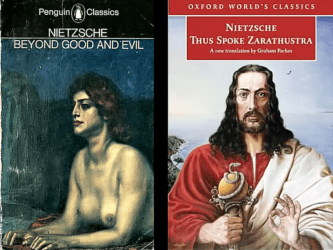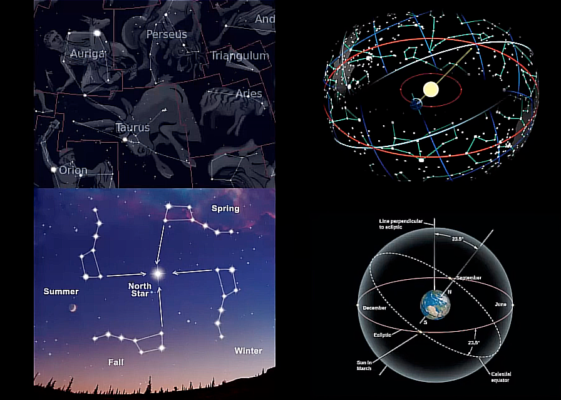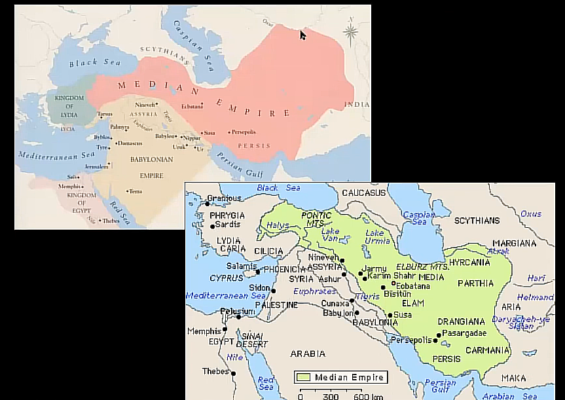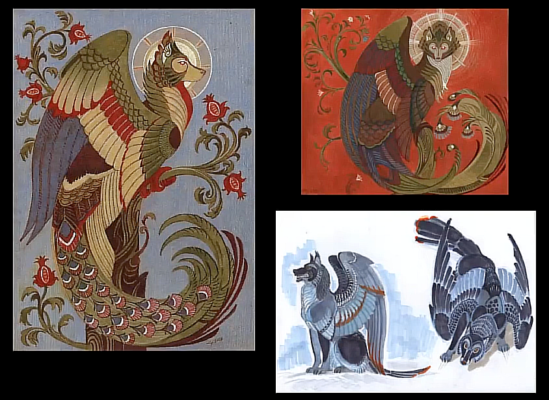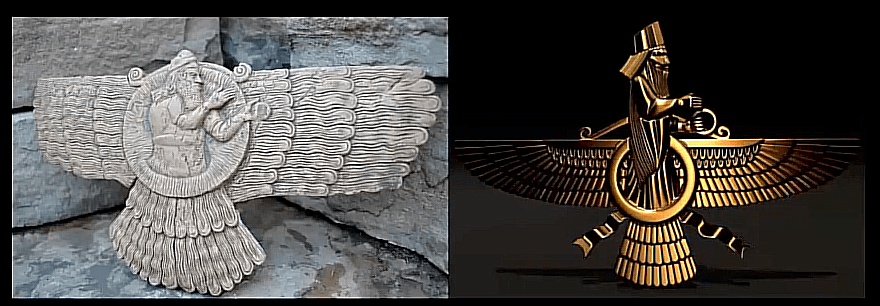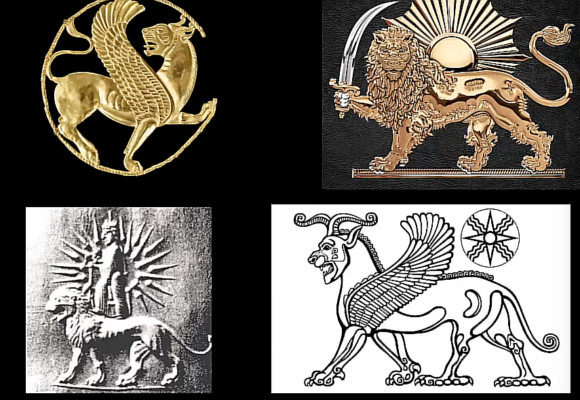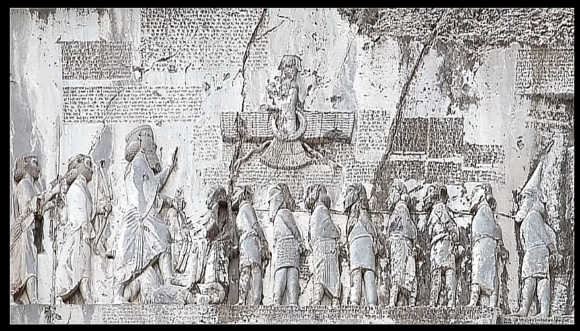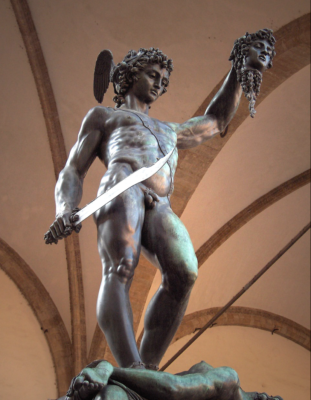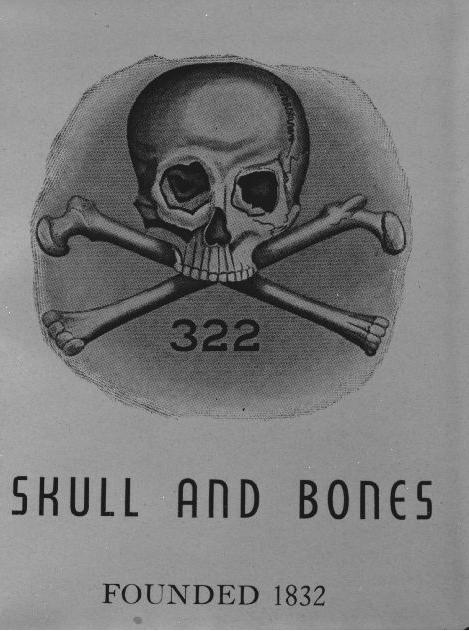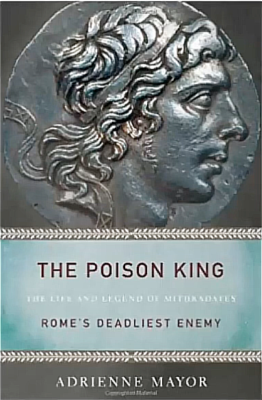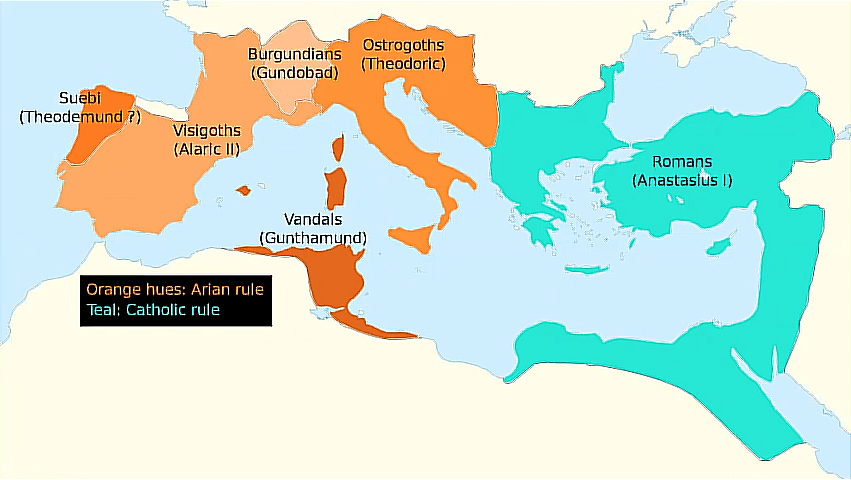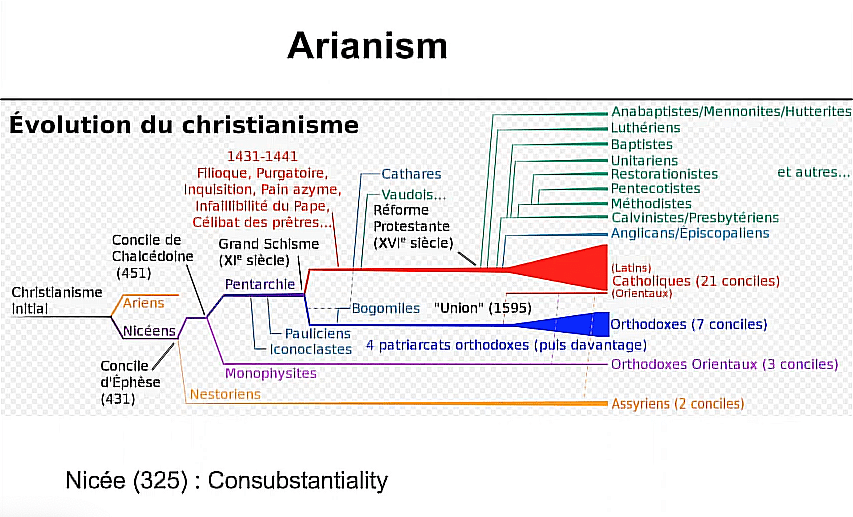25 January 2024
Golden Rule of Zoroastrianism :
“Do not do unto others whatever is injurious to yourself.”
Hillel the Babylonian when asked to define the Torah, said :
“Do unto others as you would have done to yourself, the rest is a commentary.
Zoroastrianism, is also known as Mazdayasna and Behdin. Mithraism, as the ultimate foundation doctrine upon which the path to personal power is travelled but this has been occulted, and as a result its form is cryptic and over the millennia has been concealed in the folklore and folk traditions of the Iranian people. There are four major celebrations within Mithraism, the four major holy days celebrate the solstices and the equinoxes. This in turn presents Mithraism to be a ceremonial recognition of the cycles of nature known to the Abrahamic religions as the work of the Druid. To make a study of the tradition generally mistakes the origin of Mithraism to have root in the Zoroastrian liturgy, the truth of the matter is that the festivals far predate Zoroastrianism. The tradition itself is Mithraic and includes the festivals of Yalda, which is a time for the commemoration of the triumph of light over darkness, still practised in Iran today and holds direct connotations to all those who claim to identify as what is termed,’Celtic’. The festival encourages us to recognise the hardships while projecting into the new Sun cycle, thoughts of improvement in all endeavours and therefore the festival, Yalda is the source of what today we call Christmas. Mithra in its true form represents the light, Yalda therefore is the birth of the light. Next comes Norouz which is the spring equinox, then comes Tirgan, the summer solstice celebration, and here we will see a relationship between Tyr in Tirgan and the Norse traditions Tyr, you have Mithra khanna or Mehrgan which features the name of Mithras himself in the name of the celebration which is the autumn festival. The image to the left depicts a Yalda Altar which is the celebration of the Winter Solstice and the birth of the light, the birth of light is Mithra. The pomegranate and other solar fruits like watermelons, feature on the Winter Solstice altar. On the decorative pomegranate there’s a symbol which has become widely known as the paisley pattern in the West, which is called boteh in Iran, the original meaning of this symbol is reflected in a contemporary stamp issued by the Iranian government and it represents a bent Cypress tree, below.

Evergreens are sacred and honoured by the Mithraist’s and we can see this carry forward in our times as the Christmas tree, a direct survival of the Mithraic reverence for the evergreen. The type of evergreen that is most common in Iran, is a Cypress tree.
The Cypress tree signifies truth in ancient Iranian culture, Asha or Arta, truth in the sense of what the Vedic religion referred to in the oldest Sanskrit texts and so the idea of a bent Cypress tree is that in order not to break, in order to endure, the truth has to bend, which is an idea that has a certain relationship with the archetype of the trickster, specifically in the Norse tradition and Loki. The idea of the dynamic capacity of the truth to bend and be adaptive and could also be the basis for the geometry of the Phrygian cap, which is an important symbol in Mithridatic theology and was a major piece of attire worn by the Scythian.
Below we see the Mithraic celebration of the Autumn Equinox, as with the Yalda celebration the offerings on the altar are important, but there is another facet of the Autumn Equinox celebration that is particularly noteworthy, especially if you are of the British Isles, the celebration involved the building of bonfires and the jumping over of purificatory fires or fire walking, in the sense of a symbolic trial by fire, and these kinds of bonfires were often associated with the harvest and coming of Autumn, the harvest.
Bonfires
As with all things as time progresses, the original ethos is lost as another interpretation rises from the cauldron, the original New Year, which was the festival of Mithrakana or Mehregan, was changed by Zoroastrians to the Noruz celebration or the Spring Equinox, this meant that the date of the New Year was moved as the religion of Iran shifted from Mithra to Zoroastrian. Aspects of the original Autumn Fire Festival were grafted onto the celebration of Noruz, so that on the last Wednesday of the year before Noruz, they jump over bonfires. Another part of the celebration is for people cover themselves in sheets and then bang on the walls of houses to exercise demons and malevolent spirits from the house, the people dressed in sheets represent the ghosts being exercised from things and places who are then offered sweets, so elements of what became the Samhain Festival or Halloween are also traceable back to this original Mithraic Autumn Festival.
Noruz is important in that people mistake Noruz for a Zoroastrian holiday when it’s not, if you look at the original symbolism of Noruz or the new day, it has to do with the ascension of a certain king, emperor, called Jamshid, as he ascends into the heavens with his throne being carried by Deaves or Devs that he has bound into his service, the bonfire is important here, in essence the people are celebrating around a bonfire which symbolises an alchemical transformation of matter from one state to another, from a base solid into something finer, in the case of the fire, a gas that ascends to the heavens which mimics Jamshid’s throne being lifted into the heaven by Deaves, see below image.
The fundamental distinction between the Iranian and the Indian belief systems is that the Iranians worship Asuras or Ahuras and they demonise the Daevas who are worshipped by the Indians.
Left you can see Daevas that have been subjugated by a king who is said to be attaining Ahuric or Ashiurik power, so it is clearly a Mithraic image and holds a synchronicity to the Atlantis myth in western civilisation, or in the Greek culture that we find in its oldest form coming from Plato, in which we are told that Jamshid Shah and his whole civilisation is punished by the Daevas, that there is a destruction of the world to punish the pride of the king who believed that humanity could ascend to godly power by storming the heavens. If you reference the Avesta we see that the form the destruction took in the homeland of the Aryans, was not a flood, but a freezing over of the Aryan homeland.
This is again referenced in the Norse theology where it is said that Hel or Niflheim is a cold, dark, misty world of the dead, a frozen place which is in direct opposition to the Abrahamic tradition that sees Hell as extremely hot. This opens the window to see the interconnection with Mithraism and the lore of Odin and the Norse Pantheon itself, which by necessity conjoins the same theology to that of the Greek pantheon and also for the Romans, or the First Rome, the Republic that became an empire.
Second Rome was Constantine and the Third Rome is claimed by Russia, which Vatican II carries out in its shift of authority from Vatican Rome to the Russian Orthodox system which is ultimately a Byzantine mix with Mongolian and other eastern races pulling together in what is called the Noahide, or the Laws of Noah. This has been achieved through the Carolingian Holy Roman Empire, parading as the Franks, pulled together under the title of ‘Prussian’ incorporating all the high end Knightly Orders, from the Templars to Freemasonry overseen by the Society of Jesus.
Next comes the synchronicity and alignment of tradition with that held today by Judaism, specifically to the number seven, and if you are sharp you will begin to understand how Talmudic Judaism is in fact an occulted dark mimic of the system offered by Zarathustra. Seven is in its entirety, a Mithraic symbol, and it is what Noruz is meant to commemorate, but we are looking at a deception here in that the seven items on Noruz’s altar, which were later reinterpreted to signify the Amesha Spenta or bounteous immortals in Zoroastrianism, the seven bounties.
There are six bounties immortals in Zoroastrianism and they’re seen as emanations of Ahura Mazda, who the Zoroastrians claim is the seventh, but there’s an older symbolism that’s been covered over by the Zoroastrians, and that the seven items on Noruz’s altar, actually symbolise the seven grades of initiation and the seven planets in Mithraism, there’s been a symbolic overriding that’s taken place here. Can we guess by whom? This is the mystery school in its purest form.
The Achaemenids, who formed the first Persian Empire, are important to the next point of note in the journey of the Mithraic tradition. While we’re on the subject of Noruz (spring Equinox) it’s worth pointing out that Persepolis, the capital of the Achaemenid Empire, was referred to as tach de Jamshid by Iranians and a lot of scholars have made the mistake of thinking that in Iran, it was forgotten that this place was called Parse by the ancient Persians, and that when Ferdowsi the national poet of Iran in the early medieval period wrote his epic and he talked about Jamshid Shah ascending into the heavens, Iranians looked at the stature of this ancient site and misnamed it the throne of Jamshid, this must be considered to be a total fallacy, this site was always called the throne of Jamshid, esoterically, because the ground plan of Persepolis with all of the relief carvings on the wall, is meant to symbolise the celebration of Noruz.
In the above image you see the people are bearing Noruz gifts for the king, Persepolis was never used as the political capital of the Persian Empire, it was an entirely ceremonial site, it was a religious site dedicated to the idea of Noruz, it could then be suggested that what the Achaemenids were trying to say was that the founding of the empire represented the attempt to regain ahuric power, to reenact the feet of Jamshid shah who bound the Daevas and forced them to serve his rise into the heavens as an equal to the divine powers.
The origins of Mithraism show the primordial bull slaying and there is this sense that the bull slaying image refers to the slaying of the primordial bull in the Gathas of Zarathustra which are the oldest writings of the Zoroastrian tradition. Above you have an image of the primordial bull or cow as sort of primordial earth or the mother earth goddess, or the form from which all life springs, so the idea being that the slaying of this bull is a life-giving force, but here’s the interesting thing, that in Zoroastrianism gauche urban actually cries out to the soul of Zarathustra for protection from the Daevas, who are assailing her, and in particular, Ahriman is identified as the adversary, the figure that becomes the prototype for Satan, is identified as the one who slays the bull by Zoroastrians.
Something bizarre is going on here in terms of Mithra subsequently being identified as a bull slayer, insofar as the slaying of the bull as a positive symbol of the earth, was attributed to the diabolical power by Zoroastrians, there’s some kind of inversion going on.
In the Gothas of Zarathustra, Zarathustra developed this conceptual framework which is unprecedented in its abstraction and sophistication, he says is that there are two universal forces, one is a force of copious creation, it overflows as symbolised in the horn of plenty as it creates energy and form in the universe, the energy expresses an evolving divine intelligence, he calls Sepanto Minou.
The creative force is opposed by a constraining force, a force that constricts the creative impulse, Angra Mainyu is the daevanam daevo, “daeva of daevas” or chief of the daevas and is the constraining mentality and acts as counter force moving always to restrict or constrain the creative power of Ahura Mazda, of the lord of wisdom. This is the Dualism known to be the core of the Scythian and Celtic early traditions and the main stay of religion before Zarathustra formed his philosophy.
(The concept Ahriman is that of a mainyu “mind”, “spirit” or otherwise an abstract energy etc, that is angra “destructive”, “chaotic”, “disorderly”, “inhibitive”, “malign” etc., of which a manifestation can be anger)
There is another major innovation of Zarathustra besides this conceptual abstraction of two cosmic forces at work, rather than simply a pantheon of gods or demons, the other major innovation is the idea that history is teleological, or, that there is a progressive series of stages leading up to an end of history, and the battle between these two cosmic forces is teleological it’s going somewhere, towards an end of a time.
We can thus better see the 26000 year great cycle, taken from the Maya and other traditions, as an image in the building of Man through each zodiac sign representing its apportioned body part. We could say that as we are about to enter the cycle of Aquarius, which represents the ankles and calfs of the body avatar, then the age passed, Pisces, would the ‘feet’ upon which a new image of man is being formed, the waters were pulled asunder and loosed through the last age in order everything that was carried forth from the previous 26000 year cycle, before Aries moved into Pisces, as the head of the image of Man of the last great cycle, thus after the last age of Ares the cycle began again and shifted back to the beginning again, to the feet of the next and new image of man starting in Pisces, That during Pisces everything carried forth from the last image of Man would be thrust asunder, so that through Aquarius, this current age shift, the waters will be pulled back together as if through a filter to wash away the timelines not befitting the next image of Man. This could include such that in this time of revelation, you are forced to pick a timeline to measure your truth and worth based upon what has been made known through Pisces and has been available to you by your own efforts or lack of in this time now. A measure not born through occulted movements and sly manoeuvres but by the quality of the heart. This is the basis of the Egyptian weighing of the heart ceremony but Egypt is symbolising this act for the time after death of the avatar, death brought this ritual into play, today, we appear to be experiencing a similar mechanic playing out in the physical, and thus the judgements play out in real time, fixing character traits to a timeline un debatable.
Is this the true meaning to the Four Horse of the Apocalypse, (the great revealing) each horse revealing ones true nature to oneself? C19 being the first and the second could be described as the ignorance of knowledge birthing a foolish idea that you offer the quality of high trust to those not befitting of such an honour? Mass immigration is a problem.
Thus, Zarathustra brings forth the idea of chronological time in a way that’s unique and was a major disruption to the existing Mithraist tradition held by the then Iranian people, the shift off the doctrine was so huge, there was a major pushback by the Mithraist’s. The people of Mithras reintroduced Mithra into the cosmology of the Zoroastrians in a way that attempts to repair the dualistic divide between good and evil, light and darkness, truth and deceit, that Zarathustra is directly responsible for creating.
Around 600 BC, a century after the trials of Israel, it can be said that at the head of the thinkers we refer to as pre-socratic, would continue and expand the philosophy from Zarathustra to Anacharsis of Scythia, to people like Heraclitus of Ephesus and so forth, we can deduce Zarathustra and his theology to be so abstract and conceptual, we can see it as the beginning of philosophy and its matrix is entirely Indo-European there’s nothing Semitic about it whatsoever.
To understand how they achieve that, is to comprehend the fact that Mithra in Persian and other Iranian languages, is a name that is only given to females, Mithra is a feminine name and the deeper you dig into the origins of Mithraism, including accounts by Herodotus and other Greeks, you see that Mithra was worshipped in the feminine form originally, and so the figure of Anahita who is later identified as the mother and consort of Mithra, was a split off the feminine aspect of Mithra himself. Interpreting the meaning of this idea pulls in the mother – son marriage, exemplified in Egypt and perhaps carried through into Rome as some of the characters becoming emperor expressed a rather unsavoury, at least by today’s standards, tie to their earthly mother. Thus we have the scandalous myth that Mithra gives birth to himself by taking his mother as his consort.
Not unlike the Ouroboros idea, the core meaning of which is the act of self-creation, Mithra creates himself, Mithra is not created by any other deity, Mithra in effect brings himself into being.
To the extent that Mithra becomes an archetype for the perfect Man, who is called to the act of self-creation rather than being beholden to any creator beyond himself, this feminine aspect of Mithra that was split off as Anahita, was depicted as a Gorgon by the Scythians, who were the predominant Mithraist’s in the most archaic period of Mithraism, they depicted her as a Gorgon, the same Gorgons that appear in Greek mythology are actually Scythian goddess figures, and they’re led by the feminine aspect of Mithra, who becomes Anahita in the culture of the ancient Persian Empire, and there’s one other very prominent form of Mithra as a female or of the goddess aspect of Mithra, that would be Artemis.
The Greeks themselves say that Artemis was a goddess of the star nations, the Sarmatians are an Iranian people, the Amazons of Greek mythology are the Sarmatian people who are a tribe of Iranians closely related to the Scythians, and Artemis was their main deity, so the name Artemis has an etymology that makes sense in Iranian, it translates as the ‘immortal truth’ in ancient Iranian would mean the immortal truth, so this could be another iteration of Mithra and one that was particularly predominant in the Sarmatians culture, Mithra for the Scythians and the Sarmatians, the oldest people who worshipped Mithra was in the sense of, a god of odes and contracts, Mithra literally means bond or covenant and it came to mean ‘friend’ by extension of that, so a friend is one you can trust and with whom you have a bond.
Mithra means bond, covenant, friend, and the one of the oldest symbols of Mithraism or a characteristic of Mithraism, is the handshake or hand clasp which you see left, depicted in the investiture of Antiochus by Mithra shaking the hand of a Mithraic king with or of Mithra with Hercules, and one thing that’s worthy of note here, that Greeks, like Herodotus, said, that there was a figure in Iran in the Scythian culture, known as the Scythian Hercules, this figure is known as Rostam in the Persian book of kings, and the myths surrounding the Rostam figure are actually further keys to deciphering the meaning of certain esoteric symbols in Mithraism.
The Iranian’s would swear by Mithra when they made an oath or a contract, here we can see the meaning behind all those special kind of handshakes afforded to the secret societies, and thus we can say the handshake is another Mithraic symbol as is the use of the term, friend.
The idea of taking an oath Rite, is well attested in Mithraic sculptures from the Parthian period, and this is particularly significant because to get to the core of the issue, the way that the Mithraic’s attempted to repair the dualism set up by Zarathustra, they said that Mithra, as a god of odes and contracts, sets himself up as the mediator between the two cosmic forces playing out in dualism, so you have Ahura Mazda the god of truth and light and the cosmic creator, and then you have Ahriman, the force of deceit, darkness, derangement, constraints and so on, from this comes the idea that it is Mithra that makes these two parties take an oath to abide by certain terms, as they fight a cosmic war over successive epochs until the end of history, with Man at its core. The battle is carried out within Man.
Now we have entered into the symbolism of a trinity.
Trinity in Egypt
We can see how from an original tradition many changes are brought about as Man consistently battles against the adversary who mimics what is to what appears to be opposite and yet both have the same source, that through these tensions and battles the original root becomes diluted and so the new theology begins to lose all sense of itself, man moves ever away from the original ritual to suit differing groups of elites of Man, male and female, until we are left with a script so divisive, all semblance of a common root is lost.
Three Shiva
From the new advancement post Zarathustra, Mithra becomes the umpire, the judge or mediator between the forces of good and the forces of evil, he is the Ein Sof of Kabbalah centred between the two polarities or the two paths. In essence this gives for the rule of Men the only necessary procurement would be to have those beneath accept you act for Mithra.
The Three
Petroglyphs of Konkan, above – Barsu Sada, India petroglyphs possibly go back to 8,000 bc.
Temple of Set
Mithra was also associated with Mars and Mars or Aries in Persian is, Verethragna or Bahram, this comes from the most ancient Iranian language and was an avatar of Mithra, so this is where the idea of Mithra as a war god comes into play.
Mithra is the umpire in the cosmic war between the forces of light and darkness, Mithra is therefore also a god of war because he is presiding over the cosmic war, and in fact the cosmic war in a way turns on him and so Mars is depicted as a wild boar. The wild boar was an emblem found within the British Isles, or at least a huge part of her, first comes in three Roman Legions who had a boar as their emblems: Legio I Italica, Legio X Fretensis and, most famously, Legio XX Valeria Victrix each in turn participating in the invasion of Albion to be named Britannia in 43 CE, where it remained until at least the beginning of the 4th century.
Boar images were also used on battle-banners by the Anglo-Saxons. In the poem Elene there is mention of a eoforcumbol and in Beowulf a eoforhéafodsegn. (Banner with a boar’s-head design.)
Bahram or Verethragna was an avatar of Mithra, in particular in the guise as an avenger of those who are oath breakers, those who are oath breakers will be avenged by Mithra in the form of Aries or Mars or Bahram, and within the Scythian culture, which was the oldest matrix, the most primordial matrix for Mithraism, was an extremely warlike culture, these are people who would scalp their enemies, they would take the skulls of their enemies and dip them into metal and use them as drinking chalices and they would drink Amanita Muscaria laced wine from out of these drinking chalices and also ale. This is also synonymous with much of the Native American culture which interconnects through the tales of Atlantis.
The wine was a later addition in the period of the Roman Empire, the earliest form of the soma drink was some other type of intoxicant laced with amanitas celebrated by a heavily tattooed people, the Scythians. Scythian tattoos have been reproduced from the archaeological evidence after finding Scythian bodies with tattoos.
There was another group seen as a shamanic people who had a lot of symbolism and customs in common with the northern European so-called barbarians, they’re the genuine ones so named by the Greeks that would go on to become known as the Germanic peoples, the Aryans.
The Scythian cap is pointed which became the magician’s cap in the West and it’s also the basis for the design of stupas, Buddhism evolved from the matrix of Scythian culture known as the Sakka, of how the teaching of Siddhartha Gautama was actually coming from out of Scythian culture and how Guatemala was really a Scythian who settled in northern India.
The Scythians would drink amanita mascara as an intoxicant, interestingly the colour scheme of the amanita and the forest floor underneath the evergreens, revered by the Mithraic’s, that become the basis for the flag designs for all of the countries that were once Mithraic.
Consider the Second Horse.
If you look at the flag designs of Iran, Kurdistan, Tajikistan and Bulgaria, Bulgaria being the original homeland of the Sarmatians, even Hungary, which was later occupied by Turkic Huns, was part of the Sarmatians heartland, so these countries in their colour scheme preserve the significance of the amanita in original Mithraic culture and the rioting outfit of the Scythians, which is not to be found in classical Europe given what we know of the Greeks and the Romans who went around in togas, if you look below we see a riding outfit with a vest bound by a belt over pants with riding boots, synonymous with the Scythian culture.
The colour red was significant for Mithraist’s and the Phrygian cap upon the head that survives today in the garments of St Nicholas, Father Christmas or Santa Claus.
The reindeer that pull the slay for St Nicholas were magical animals to the Scythian Mithran’s, they depicted reindeer all over their gold craft work and could well be symbolic for transcendent and ecstatic flight through amanita intoxication.
Myth and Mithras talks about the significance of psychotropic drugs to the Mithra’s cult.
Back to Mithra as the umpire between the forces of light and the forces of darkness. Another way in which the Mithran’s attempted to repair the dualism set up by Zarathustra, is that they said look, this chronological time that the cosmic war is taking place over the course of, is really an emanation or a degeneration from a primordial time which is not chronological, they called this Zurvan. Time is not a thing it is a measure.
It is basically the idea of Kronos or Saturn and they said that Ahura Mazda and Ahriman, his adversary, were twins born of the primordial lord of time, below you see a very ancient Iranian pre-accommodate engraving that shows the Daevas on the one side of Zurvan and the Ahuras or Ashuras on the other side of Zurvan with Zurvan basically handing over power to Ahriman the leader of the Daevas or Devs on the one hand, and giving investiture to Ahura Mazda, on the other hand, and Zurvan was considered an androgynous deity. In the above image we see the same translated within the Christian imagery.
But there is another meaning to this symbolism, consider that while expressing oneself from the three lower chakras without ascension, translates to the fact, you are still relying on an outside force to umpire the two polarities at your disposal, not until you master the first and root, the second which is sacral and the third chakra, that of the Solar, and take full and complete responsibility for both your masculine and feminine nature, the left and the right, positive and negative, the Ahuras Mazda and the Ahriman within and outside of your avatar, only then do you become the rider of the horse. This is symbolised in the Chariot in the Tarot.
In this new Mithran tradition made so by the Mithraist’s of the day, Zurvan was said to have a feminine aspect and a masculine aspect and the feminine aspect within Zurvan which is the face underneath the bearded head, in the above image, that was referred to as Oz or concupiscence it was like a primordial desire.
So the idea was that Zurvan the god of time, was profoundly unconscious, unaware of himself, and he is seduced by the Oz, by the concupiscence within himself, sort of hypothesised as a semi-autonomous being, he is seduced into a premature birth of Ahriman and then the other twin Ormuz is born secondarily, so the world is in the first place delivered over to evil and then the good twin Anura Mazda, the force of light and truth and order, is born secondarily and carries out a remedial function, so this is the myth that the Mithraist’s developed as an answer to Zoroastrian dualism, and it’s really a myth that signifies being beyond good and evil, being both of the supreme deity beyond good and evil and also becoming free from dualistic morality and this kind of dichotomous thought through the process of divination.
If you look at Nietzsche’s, the spokes Zarathustra, the second coming of Zarathustra that Nietzsche portrays in that text, is really the coming of a Mithraic Zarathustra who is critiquing the dualism of the historical and philosopher Zarathustra, Zurvan later on was depicted in this form adopting some of the iconography of the Gorgons, which again goes back to Scythian culture and you see also the serpent wound around him/her this androgynous being. A good resource for understanding the significance of Zurvan in Iranian thought is this book Zurvan a Zoroastrian Dilemma, by Zahner, and i think that one of the major deficits in western scholarship on Mithraism is that they do not situate the cosmology and metaphysical theology of Roman Mithraism in a context as is presented by Zachary in this book on Zurvan, so until you do that you can’t understand for example what the bull slain means.
Image from the Roman period depicting the constellations.
In this book the origins of the Mithraic mysteries it talks about the bulls slaying symbol in the context of the procession of the equinoxes, but he doesn’t make the connection back to Zurvan in a way that prevents him from seeing the big picture, so what does this cryptic image above really mean?
It’s true that the Scythians used to carry out raids where they would go and basically capture the cattle of a sedentary population, their religion or their form of archaic Mithraism was a sacrificial religion.
Cattle would be seized and sacrificed, but that’s not what this symbol really means, this symbol is the overcoming of the Age of Taurus by the Age of Aries and we know that because we know for a number of reasons, you have to go back to the scholarly texts to really understand all the pieces of evidence for it, but one way that this becomes very evident in terms of the symbology of Iranian culture, is the Swastika.
In the Iranian civilisation it is called Garduneh mehr or the Wheel of Mithra, why would the Swastika be called the Wheel of Mithra? The bear constellation around the pole star at various forms of the year forms the shape of a Swastika and the idea was that Mithra, as the umpire, as the mediator between the forces of light and darkness, the twins who are born of the primordial time god, Mithra as the mediator between these forces can ascend like king Jamshid to the celestial sphere and overpower the god of time, namely Zurvan/Saturn, by grabbing the heavens at the wheel around the pole star and shifting the entire celestial sphere, this is how the procession of the equinoxes was understood symbolically by Mithraist’s.
The 12 constellations and the seven visible planets were seen as fatalistic forces, they had a kind of archaistic power over man and so they are effectively mediators of Zurvan’s control over man.
Chronos is the father of time, a god who limits unbalanced creations, that the way to freedom and self-determination is to ascend above the celestial sphere and to grab the heavens by their wheel and become the entity who turns your world. What we are seeing in the symbol of the bull slaying is the Age of Taurus being overcome by the Age of Aries, again, Ares/Mars was the avatar of Mithra as a way of symbolising the turning of Mithra’s Wheel and the power over fate and the capability to make one’s own destiny.
If you actually look at the statue of Prometheus at Rockefeller centre, you’ll notice that he is rising above the sphere of the 12 constellations, there is this ring of the ecliptic branded by the symbols of the zodiacal constellations and this Prometheus figure, who is carrying fire, and is rising up and beyond this ring of the ecliptic.
The Greeks and the Persians both associated Perseus with Mithra, they said Perseus and Mithra were the same figure at a certain period in hellenistic history, they said that Perseus stole fire from the gods and brought it down to the realm of mortals and set up the order of the Magi as guardians of the perpetually burning flame, (Statue of Liberty, the Olympic flame that Adolf Hitler lit and has been continuous since 1936 and is paraded around the competing nations before the propaganda extravaganza) so there are aspects of the iconography of Mithra, who is a Titan which aligns very closely with the symbolism of the cult of Prometheus who is a fire bearing Titan, in essence you have this Mithraic response to Zoroastrianism and this is not only on an ideological level it’s also on a political and a military level, this conflict between Zoroastrianism and Mithraism exploded in Northeastern Iran at the period where the Median kingdom reached the edge of the Scythian realm, the Scythians are up here in central Asia and in the Caucasus and at a certain point around about 600 BC, the Median kingdom pushed up to the borders of the Scythian realm and the Medes in this area had adopted Zoroastrianism and were becoming crusaders for it.
They sent out the king who was Zarathustra’s patron, they sent out a Crusader champion, his son Esfandiyār, to convert the Scythians forcibly to Zoroastrianism.
This is where you get in the Iranian national epic, the story of Rostam and Esfandiyār where the champion Rostam goes to battle against this Crusader for Zoroastrianism, and in this battle he is assisted by his father who’s a Mithraic magician, who calls upon this figure, Seymour, to teach him how to create certain magical arrows that slay the Zoroastrian crusader, Esfandiyār.
This is of importance in the sense that Rostam was from the Indo-Scythian kingdom, he was from an area in South Eastern Iran known as Carmania, or because the local language vacillates between k and g, (k and g are alternate in the dialect of this area) it was known as Carmania or Germania and also as Sistan.
Rostam, who is über viking, Uber Norse in his appearance in the iconography of him, comes to fight against the Zoroastrian Crusaders and he calls upon this magical bird of his sorcerer father, below, to help him defeat the Crusader, the symbolism of this bird originally is that it has a wolf’s head, wings and a serpentine body, so this Simurgh could be connected to the symbolism of Fenrir in Norse mythology.
We must consider this because Tyr, as he’s attempting to bind Fenrir, swears with his right hand which is bitten off by Fenrir and Fenrir is subsequently bound until Ragnarok, the end of the world, and so Tyr has only the left hand free. This hero, this champion, who is identified by the Greeks as Ares and by the Romans as Mars, just like Mithras, he’s left with his left hand as his right hand is bitten off by Tyr.
Ares (Mars) outside at Hadrian’s Villa.
The designation left hand path in the Indo-Aryan tradition refers to the path of worshiping the Ashuras or Ahuras rather than the Daevas.
It’s an inversion of orthodox Vedic religion, with Mithra, like Prometheus, as an Ahura, and so somewhere encoded in this symbolism of Fenrir biting the right arm of Tyr, is an understanding of the Mithraic figure as the bringer of the left-hand path, and interestingly, we have this named here in Persian as it survived in the Iranian tradition, as the arrow that’s let loose by Aries, the archer, Arash or as the Greeks would pronounce it, Ares, is a Mithraic figure who is famous for having loosed a magical arrow that defined the boundaries of the Aryan realm, so the Arrow of Arash is called Tishtrya, Tir, which is of course the rune for Tyr.
I doubt this is an incidental connection and this Tir was associated with the Dog Star, again evoking Fenrir, Tir is the figure most closely associated with Tirgon or the Summer Solstice, when people pray for the coming of rain, they pray to the Dog Star. So again you have a Tyr association with a canine, and finally, if you look at the Norse myths, the unbinding of Fenrir at Ragnarok is closely associated with his father, Loki and the serpentine symbolism associated with Loki is also closely associated with Mithra in Mithraism.
Mithra is basically an archetype that precedes the kind of differentiation we see in the Norse religion between Tyr and Loki, it’s as if the god of truth and justice and oaths, Tyr, and the trickster figure Loki, have been split off by the Norse branch of the Indo-European family, from a more primordial archetype, Mithra, who is both a god of truths and odes and contracts and also a trickster figure, associated with the powers of darkness, and perhaps not so much a later synthesis of these two different figures in a perverse way, but it’s the more primordial form that’s been sort of dissociatively differentiated by the Norse, because Mithra Varuna occurs in the oldest Sanskrit texts, as an Ashura as opposed to the Daevas, so the left-hand path is as old as that, that it was present in the Aryan tradition from the beginning, reflected in the myth of Fenrir who is a figure that binds together Tyr and Loki.
The serpent symbolism that you see in Loki is closely associated with Mithra through the synthesis of Mithra with Nergal who was the god of the underworld in the Assyrian and Babylonian culture, and even before the founding of the first Persian Empire, you had the synthesis of the cult of Mithra on the part of the Medes with the cult of Nauru.
The Medes were formerly called by everyone Arians, but when the Colchian woman Medea came from Athens to the Arians, they changed their name, like the Persians [did after Perses, son of Perseus and Andromeda]. This is the Medes’ own account of themselves.
So as the Medes took over the Babylonian and Assyrian world they identified Nergal with Mithra and this re-emerges again in the Iranian national epic in the figure of Zahhak. Zahhak, who is this king with two serpents sprouting from his shoulders, he is a black magician whose serpents are said to feed on human brains, an allegory to the effect that he is a perverter of people’s thoughts and from a Zoroastrian perspective, that would be true if we’re dealing with a Mithraic magician.
So the Zahhak figure is a reiteration of this dark aspect of Mithra as identified with Nergal who was again the god of war, so Nergal is the Mars Aries figure and that the two serpents emerging from the shoulders of Zahhak, which presumably are wound around his spinal column inside his body, are meant to signify the Caduceus which is a serpentine mace, Zahhak has his skull crushed by a hero Fereydun using a bull-headed mace, he is the bull slayer, Mithra is the bull slayer, the bull-headed mace is being used to crush the skull of the guy, who had the king and has the serpents emerging from his shoulders, Perhaps the Caducei, the Caduceus, is the mace of Zahhak or the mace of Mithra and you see it right here in the symbolism of the first grade of initiation and Mithraism, the Caduceus together with the Raven. See above image.
The other god that Mithra was associated with when the Medes took over the culture of the Babylonians and the Assyrians, was Shamash, who was the god of truth and justice and the solar deity of Mesopotamia, the symbol of the above in gold becomes emblematic for Mithraism and then later for Zoroastrianism, but is modeled on the iconography of shamash.
The symbolism of Shamash and Nergal are mixed together in the Mithraism of the Median period and from out of that we get the icon of the lion and the sun which to this day is the Iranian national symbol. This symbol which has been cryptically reinterpreted as all kinds of things up to and including Imam Ali in Shiism this is basically Nergal and Shamash symbolism appropriated by Mithraist’s to depict Mithra the lion, the sun being an archaic depiction of Mithra. One of the worst distortions of history is the claim that the Achaemenids, the rulers of the first Persian Empire, were Zoroastrians. There is no evidence that the founder of imperial Iran was a Zoroastrian.
Cyrus the Great (Donald Trump) doesn’t refer to Ahura Mazda or to Zarathustra anywhere, he has a methodic solar lotus inscribed on his tomb, he gives instructions for a horse sacrifice to take place at his tomb once every month. Sacrifices of animals in general are prohibited by Zoroastrians. Cyrus the Great went around his empire building temples to Anahita, the consort and mother of Mithra, his investiture was in the Temple of Anahita and subsequently the crowning of all of the Achaemenid kings took place in temples to Anahita.
There is also a claim that this Cyrus was anything other than a Mithran and also of his successors, particularly Darius the Great. Darius the great uses the name of Ahura Mazda in his various inscriptions, but if you look at how the man came to power he was a consummate schemer, we see this in numerous Greek accounts from Herodotus and others. He was a military officer who was not a blood descendant of Cyrus, Darius used numerous stratagems and duplicitous tactics in order to attain power and then he carried out a military coup d’tat and the suppression of 19 rebellions across the country, again employing tactics that depart very drastically from any kind of orthodox Zoroastrian ethics.
Darius lies about having killed the figure Guatama, who ruled the empire for about six months after the death of Cyrus the Great, he actually let Guatama go, Guatama being a Scythian Magus who winds up in northern India under a false identity and becomes Guatama Sakamuni, the Scythian sage.
Darius did that because Darius philosophically identifies with certain aspects of the teaching of Guatama, which are Mithraic in nature, but he believes that he would be ruinous as an emperor but is given a second lease on life as a philosopher.
There is comparison between the fragments of Heraclitus and the oldest teachings that are attributable to Guatama, it can be argued that Darius the Great extended an invitation to Heraclitus of Ephesus to come and be the court philosopher of the Achaemenids and thus shows that he had a philosophical motivation for sparing Guatama’s life, despite his extremely brutal treatment of the other rebels. So this man employs noble lies and stratagems to come to power and he does it on the basis of a Mithraic philosophy that you see also reflected in the fragments of Heraclitus.
Heraclitus who took refuge in the Temple of Artemis at the end of his life, Artemis was an Amazon goddess of the Iranian Sarmatians who represents the split-off feminine aspect of Mithra. It is doubtful that Darius the Great was a Zoroastrian, he was a Mithraist..
The next major figure in the Achaemenid dynasty, is Xerxes, who wasn’t a Zoroastrian, despite him evoking such in his inscriptions, the man actually carried out human sacrifices of both male and female virgins on the way into Greece. He was sacrificing animals and engaging in some of the darkest practices associated with the Nergal Cult that had been assimilated into Mithraism, but this is another Mithraic leader in the period, so the idea that the Achaemenids were Zoroastrians is an historical inaccuracy.
When we see Mithraism emerge as the dominant ideology and theology of Parthian Iran it’s not that somehow Zoroastrianism has been replaced by Mithraism it’s just that the more archaic form of Iranian religion has dispensed with these sort of useful pragmatic employments of Zoroastrian theology.
One thing that shattered topical adherence to Zoroastrianism and the promulgation of a nominally Zoroastrian discourse was the Greek colonisation of Iran for 150 years from the time of Alexander and then on through his generals, who divided up the empire, particularly general Seleucus, who took most of Iran, so one can imagine how if a Greek polytheistic pagan culture is colonising Iran, how a more pagan figure like Mithra would come back into prominence and it’s in this period where the identification of Mithra with Perseus became particularly significant.
In fact of the Parthian Mithraist’s this is one of the symbols of the grades of initiation (below) the symbol of the greater of the Persian in the seven grades of Mithraic initiation, the fifth grade has the harpy sword of Perseus as one of its symbols and you see that this identification of Perseus with Mithra becomes so significant to the Parthians.
The Parthian’s had Pegasus printed on one side of their coins the various Mithridate or Mehrdad kings, given by Mithra Mehrdad means given by Mithra or Mithra’s justice. Mithridate is the first the founder of the Mithraic empire of the Parthians and this chap becomes the dominant rival to Rome, this leader sets up something called the fleet of the Cilician pirates in the eastern mediterranean and uses this as a black ops navy against the Roman Empire. This is the same set of pirates that took riches from Spartacus and failed to provide the ships.
It is commonly believed that Mithraism spread into the Roman Empire because Roman soldiers fighting against Iranians, had a kind of conversion experience.
The Roman deity Mithras appears in the historical record in the late 1st century AD, and disappears from it in the late 4th century A.D, just as the Talmud was moving from the oral to the written word. Unlike the major mythological figures of Graeco-Roman religion, such as Jupiter and Hercules, no ancient source preserves the mythology of the god. All of our information is therefore derived from depictions on monuments, and the limited mentions of the cult in literary sources.
The temples of Mithras were always an underground cave, featuring a relief of Mithras killing the bull. This “tauroctony“, as it is known today, appears in the same format everywhere, but with minor variations. Other standard themes appear in the iconography. Many Templar chapels were formed either underground or in caves. The cult was all male. There were seven degrees of initiation with different ritual meals associated with each degree.
The modern study of Mithras begins just before 1900 with Franz Cumont’s Textes et Monuments (TMMM). This two volume work collected all the ancient evidence. Cumont presumed that Mithras was merely the Roman form of the ancient Indo-Persian deity Mitra or Mithra. In the mid-50’s Cumont’s pupil Maarten Vermaseren published a new collection of monuments, the CIMRM, which added the archaeological discoveries of the last 50 years, but also highlighted how poorly the archaeology supported the Cumontian theory. At the 1971 international conference on Mithraic studies, Cumont’s theory was abandoned in favour of a Roman origin for the cult. M.J. Vermaseren rejected Cumont’s theory in 1975.
The ancient writer Justin Martyr referred to one of the ritual meals of the cult as being a parody of Christianity. In some speculative passages Cumont sometimes tried to interpret some Mithraic ideas in Christian terms. Consequently various modern myths came into being. These appear as fact in older scholarly literature, and sometimes in non-specialist academic literature even today. For the most part these errors appear in non-scholarly literature.
The main conduit for the spread of Mithra from Iran into the Roman Empire came through the Cilician pirates who were operating as a black ops navy for Mithradatis the first, and the reason they adopted the skull and the crossbones as their standard, is because it’s a reference to this overcoming of the lord of time and fate, the crossed bones are supposed to be separated by 23 degrees which are the number of degrees separating the celestial equator from the ecliptic, and so the head over the crossed bones is death’s head, it’s the head of time which for us means death, until and unless we can turn the Wheel of Mithra and overcome celestial faith and become the masters of our own destiny.
The skull and the crossbones symbol came from as first flown by the Cilician pirates and then it wound up on poison bottles because Mithridate, the sixth, who set up a kingdom on the Black Sea at Pontus, Mithratati the sixth was infamous for his use of poison to assassinate his enemies. The Jesuits are also known for using poison as the preferred method of assassination which is classes as a feminine trait.
This guy was Rome’s deadliest rival and he was a Mithraist and is associated with the Cilician Pirates, he used poison as his predominant method of assassination and thus how the skull and the crossbones wound up identified with poison.
In 75 BCE a band of Cilician pirates in the Aegean Sea captured a 25-year-old Roman nobleman named Julius Caesar, who had been on his way to study oratory in Rhodes. As the story is related in Plutarch’s Parallel Lives, the capture was a minor inconvenience for Caesar but very bad luck for the pirates.
During the Third Servile War, Spartacus would negotiate with the Cilician pirates as potential allies in his struggle against the Roman Republic, but the importance of slaving to the Cilician pirates made any alliance between the pirates and a slave rebellion one fraught with tension and potential for betrayal.
The Cilician’s of the First Century BCE were a multi-ethnic nation, composed of Greek, Syrian and Isaurian descent, though the country was Hellenised culturally since the time of Alexander the Great.
The situation remained unchanged for millennia. Only when the pirates directly threatened Rome’s interests, the Republic organised the massive punitive fleet. Under the command of Pompey the Great, Rome eradicated the piracy, transforming the Mediterranean into Mare Nostrum (Our Sea).
The Sassanids, who were the second Persian empire, displaced the Parthians. The Parthians were not Persians they were Iranians, but as point of fact, they were Scythians, and were quintessential Mithran’s.
When the Sassanids overthrew the Parthians they persecuted Mithraism leading to a massive Mithraic revolt against the Sassanids, a revolt that was led by a figure called Mazdak who actually became the prime minister of the king cavad the first. After a period where they were successful with various programs, they were themselves massacred and their movement was forced underground.
The Mithraist’s led by Mazdak around about the late 500s, were forced underground by the Sassanid king and when the Sassanid State is destroyed, by the invading Arabs, and a black hole vacuum of power opens in Iran, the Mithraism of Parthian descent, particularly in the north of the country, in herekinia, re-emerges to establish semi-autonomous fiefdoms, and what you see happen is initially a revolt of Mithraist’s like babak against the government of the Arabian Caliphate, and also against the Muslim religion.
But then once these Mithraic revolts in their pure form are defeated by the forces of the Caliphate, actually, not by the Arabian Caliphate but by the Turks, who adopted the Caliphate and make it their own, once these initial Mithraic revolts are defeated, the Mithran’s in that northern part of Iran attempt to preserve Mithraism in an esoteric and occulted form, under the cloak of Islam, and you can draw a direct connection genealogically between Mazdakism, the form of Mithraism that revolted against the Sassanid State under the leadership of Nasdaq, you can draw a direct line between that and Shiite esotericism through the movement of babak, foreign in her Kenya and Azerbaijan and through the various other Mithraic cults that arose in horasan in opposition to the Sunni Arab Caliphate, and we see the Mithraic substructure of these types of so-called Shiism revealed very clearly in the order of assassins.
So the Ismaili sect of the seven or Shiism’s, whose seventh symbolism again goes back to the seven grades of initiation, the seven planets in Mithraism, are shiites or the Ismailis that fight a resistance battle against the Turks and the Mongols, and in their form of Shiism, the esoteric is revealed very nakedly and they have all kinds of heretical beliefs and practices which are not Muslim in an orthodox sense, like the belief in reincarnation, their understanding of the nature of truth, and their account of the relationship between exoteric scriptures and an esoteric initiatory truth that’s passed on through the ages.
The story ends with the figure of shaw Ismail and shows how Ismail the founder of the Safavid dynasty, which institutionalised Shiism as the national religion of Iran, shah Ismail himself was a Kurd who was initiated into Mithraism in the forests of hertenia before he wound up founding the Safavid dynasty.
Three Romes
First Rome – Republic to Empire.
Second Rome – 325 council of Nicaea.
Third Rome – May 1453 real fall and not 476 when Rome is said to have collapsed.
King Vlad the Impaler II
Council of Florence 1452, 5 months before the fall of Constantinople moved to unite with the claim that Orthodoxy alone can achieve the restructure of the empire.
Ivan III Vasilyevich 22 January 1440 – 27 October 1505, also known as Ivan the Great, was Grand Prince of Moscow and all Russia from 1462 until his death in 1505. Ivan served as the co-ruler and regent for his blind father Vasily II before he officially ascended the throne.
He multiplied the territory of his state through conquest, purchase, inheritance and the seizure of lands from his dynastic relatives, and laid the foundations of the centralised Russian State. He also renovated the Moscow Kremlin and introduced a new legal code. Ivan is credited with ending the dominance of the Tatars over Russia; his victory over the Great Horde in 1480 formally restored its independence.
Ivan began using the title tsar, and used the title tentatively until the Habsburgs recognised it. While officially using “tsar” in his correspondence with other monarchs, he was satisfied with the title of grand prince at home. Through marriage to Sophia Palaiologina, Ivan made the double-headed eagle Russia’s coat of arms, and adopted the idea of Moscow as the third Rome. His 43-year reign was the second-longest in Russian history, after that of his grandson Ivan IV.
In a letter from monk Foma (Thomas) of Tver had written The Eulogy of the Pious Grand Prince Boris Alexandrovich in 1453 to the succeeding tsar the proclamation;
“All the Christian kingdoms have disappeared and are now united within your empire, two Romes had fallen but the third is standing, and there will be no fourth Rome.”
That the universal empire would be ruled jointly by the tsar and the patriarch. Peter the Great opposed this most strongly in what you might call, the Europeanisation of Russia.
1054 the split began St Leon IX and Michel Cerulaire from the 4th crusade and its destruction by Venetian Rome in Constantinople.
1054 not result of Latins and Greeks but of the Carolingian (Venetian, Cilician Pirates) implementation over Latin and Celtic peoples.
The real Franks, the Merovingian’s claim Palestinian origin.
The East has enveloped the West
London Mithraeum Transcripts
Mithras_Bench_AudioTranscriptTemple
Mithras_TempleTranscript_
References
The excellent work of Dr Jason Jorjani.
And, Mithras the Secret God
M_J_Vermaseren_Mithras_the_secret_god_19 (1)Addendum
The Shang Empire
Reign – 1,409 BCE – 1,307 BCE
Preceded by – Demon Hunting Guilds
Succeeded by – The Jade Empire
Following the death of Zu Xin, Emperor Qiang Jia inherited the throne and swiftly embarked on establishing his legacy. A mere year into his reign, he took an ambitious step that solidified the presence of magic within his domain. Summoning the immortals, Tao and Teo, who supposedly resided within the bustling metropolis known as Da Cheng (大成), he appointed them as the supreme architects of magic for the military. From then on, these esteemed Arch-Mages became integral components in shaping the strategic deployment of sorcery throughout the Shang Empire’s armies.
Ao Guang
Around 1,329 BCE, there was a mysterious birth in the Indian City of Parthevia. An elderly woman, between the ages of 60 and 80, obtained a Djinn from the marketplace. She made a wish to become a mother, and consequently gave birth to a baby boy named Ao Guang.
Ao Guang Despite his unique origins, he managed to lead a normal childhood until the loss of his mother when he turned ten. With no parents left in his life, Ao Guang formed an unlikely bond with the same genie who granted his mother her final wish.
As they navigated life together, Ao Guang learned about the world beyond India, growing more curious with each passing day.
Around 1,308 BCE,Ao Guang saw opportunity through his intimate relationship with the powerful djinn who brought him into this world.
He made two wishes : A magical army of 100,000 men and 30 Dragons.
For years, Ao Guang reigned supreme, terrorising the human realm with devastating natural phenomena at his whim. Unbridled power fuelled his ambition, driving him to manipulate the elements with ease, summoning tempests and parching lands alike.
Ao Guang longed for enduring vitality and perpetual existence, seeking solace from the ravages of time in the comfort of a mystical being capable of granting his deepest desires. In fervent supplication, he made two wishes to the Djinn that in a sense had as his father : one for timeless youth and another for Immortality.
Enthroned as an immortal monarch surrounded only by the secrets held fast beneath the sea.
Once crowned as the Jade Emperor, Ao Guang ventured forth to meet the newly coronated ruler of China, Yang Jia of Shang.
Confrontation seemed inevitable as Ao Guang sought the legendary weapon wielded by renowned sovereign Yu the Great: “The Pillar.”
Recognising the futility of resisting the might of Ao Guang’s enchanted legion, Yang Jia of Shang yielded, reluctantly offering up the sacred artefact.
Enraptured with his prised possession, Ao Guang carried off “The Pillar,” transforming it into an impervious centrepiece adorning his magnificent underwater stronghold, honoured as one of the pearls amongst his vast and glittering kingdom.
Djinn
Djinn’s (also known as genies, jinn, Ifrit, or yokai) are Aeon creatures with free will who are able to grant wishes and have great power but they also are evil and cheating.
Wishes Rules
The relationship between humans and Djinn’s is based in tension due to differences in morality. When making a wish, it is crucial to provide specific details to avoid any misunderstandings or unintended consequences.
For instance, a vague request like “make me rich” could result in unexpected outcomes such as turning the person into gold rather than simply giving them wealth. To avoid such issues, precise language should be used when making wishes so there is no ambiguity in the Djinn’s interpretation. For example…
–Create 100 golden stones, each one in my height, create them in the corner of the room and don’t collide them while making them possible for me to collect them, please.–
if the golden stones wish is not in full detail the Djinn is free to even turn the user into gold, as it was not told otherwise.
Types
There are two types of Djinn: Irfits/Yokais and Jinns.
Irfits/Yokais are more powerful and capable of taking human form upon command. These entities typically reside among humans and serve their masters until they gain freedom through means such as fulfilling an agreed-upon task.
Jinns, on the other hand, dwell within lamps and possess lesser abilities compared to Irfits/Yokais.
Each Jinn has three wishes over a span of thirty days. However, these limitations vary depending on the specific wish granted. Both groups of Djinn follow natural law restrictions; they cannot bring back life, reverse wishes, or grant death. While they can bestow immortality, restoring previous states after alterations made by a wish remains impossible.
If for example you wish to had a third hand, you will not be able to remove it later, even if you remove it with a chainsaw it will regenerate again.
History
Irfits/Yokais
After Kami’s death in 2,230 BCE, Athena gave weapons to the Sorcerer Sthaohao (also known as The Yellow Emperor) but he wanted to use what he learned to guide the people so he passed on the Weapons to the other Sorcerers to keep in the temple of the flame and Athena stayed with them.
One of Athena’s weapons were Aeons she trapped in Jar’s, the Djinns named as Irfits and Yokais in later time in Japan.
Since then Djinns were used for various reasons, but after the Kurukshetra war, many Djinn jars were stolen and spread in Asia. One of them gave birth to the Jade Emperor, and with his Djinn he created a large empire.
Jinns
In 1,321 BCE, Pizna a powerful female Sorcerer with the help of the Egyptian army and General Agrimas captured Aeons and demons into lamps and gave her life to create a spell to make them slaves of the lamp owner creating the djinns.
Just like the Jar Djinns, the lamp Djinns were spread in the western ancient world. with many finding freedom…
Further Study

